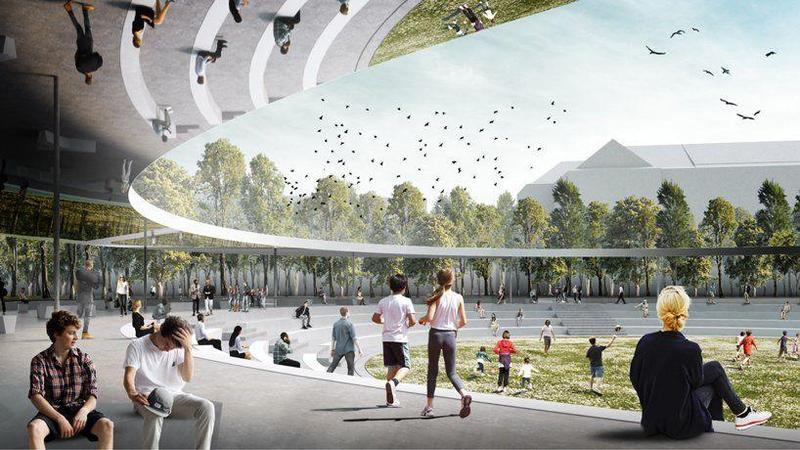Human prosperity problemMar 31, 2021
Well-being and value are inseparably interwoven. We know futures can vary significantly, even inside a solitary city. For instance, New Orleans neighborhoods under 5 miles separated see normal futures fluctuate by as much as 25 years. We additionally realize numerous areas have encountered delayed disinvestment and concentrated neediness. Indeed, the quantity of individuals living in incredibly helpless areas has multiplied since the year 2000, from 2.7 million to more than 5.4 million individuals. Such obvious differences request a reaction — perceiving that all things considered, we should inspect the job of a spot in influencing individuals’ capacity to flourish.
The examination supporting the Assembly: Civic Design Guidelines uncovers that public space enhancements offer a vital way ahead in making networks of having a place, while additionally propelling wellbeing value. From a city life angle, individuals with more noteworthy admittance to energetic stops and green space are bound to confide in their neighbors and accept local area individuals are happy to help each other. From a general wellbeing viewpoint, such access additionally makes occupants bound to meet actual work goals, have better psychological wellness outcomes, and experience less wrongdoing.
A developing collection of exploration proposes that very much kept up open green space may decidedly affect low-pay metropolitan networks, by filling holes in wellbeing inequalities. In actuality, one examination found that occupants of low-pay networks with significant degrees of private greenery have similar death rates to inhabitants of higher-pay communities. Unfortunately, urban areas wrestle with relentless uneven characters between open space needs and public space speculations. Individuals living in low-pay areas frequently depend more intensely on close-by open spaces than those living in higher-pay zones. Despite this expanded interest, capital ventures, and activities financial plans have regularly neglected to stay aware of the requirements of the weakest inhabitants.
Fortunately, a large number of the present metropolitan pioneers are recognizing the crucial significance of comprehensive and impartial public space speculations — and they’re demonstrating freedoms to carry value to the bleeding edge of neighborhood dynamic.
1. Focus consideration on underserved neighborhoods
Mitchell Silver, Commissioner of NYC’s Department of Parks and Recreation, portrays his way to deal with value in straightforward terms — “Value approaches reasonableness”. His definite survey of past capital ventures uncovered that many area parks had gotten next to zero interest in the past 20 years. Perceiving that such a lopsidedness is not reasonable, Commissioner Silver led the Community Parks Initiative to make a recreation center framework that is more pleasant for all New Yorkers and offers inhabitants a chance to engage in the plan and care of their local parks. “One of my first concerns is making our parks framework impartial”, says Silver. “That implies ensuring that each area — particularly verifiably underserved neighborhoods—have a quality park that is protected and very much kept up. In a city like New York, where numerous individuals don’t have yards, parks are vital for our physical and mental prosperity. They are where individuals associate, unwind and energize”.
A comparable obligation to value is influencing everything in Philadelphia, where the Rebuild activity will contribute countless dollars to revive fundamental urban resources like parks, entertainment focuses, and libraries. Modify’s speculations will explicitly target neighborhoods where they’ll have the best effect, for example, regions with concentrated neediness, raised crime percentages, and general wellbeing challenges.
2. Ensure neighborhood proprietorship
The City of Charlotte as of late started a Placemaking Grant to praise the city’s 250th commemoration, and support privately determining activities to improve neighborhood liveliness, wellbeing, and innovative character. Local area-based associations will get subsidizing and specialized help to assemble collective placemaking projects — from public workmanship to gardens, lighting, road furniture, and the sky is the limit from there. The award activity offers Charlotte occupants the chance to start to lead the pack on undertakings that will improve the public domain, animate social connection, and address extraordinary area difficulties and openings.
3. Deliver snappy activity
For neighborhoods that have encountered long-haul disregard and disinvestment, snappy activity is fundamental for modifying trust. At the new CityLab gathering, Detroit Planning Director Maurice Cox considered his area of expertise’s part in supporting nearby areas to drive comprehensive recuperation in the city, offering catchphrases of intelligence: “You will be decided by what you execute, not what you plan”. As a hero of Detroit’s different neighborhood areas, Cox drove home the significance of having prompt effects on personal satisfaction. ”[Even] in a 30-year vision, you will see something in a year and a half”.
4. Embed value into subsidizing standards
“We as a whole improve when everybody flourishes” is the slogan for the Strong, Prosperous, And Resilient Communities Challenge (SPARCC), a three-year, $90 million activity to guarantee that major new foundation interests in 6 urban areas lead to better and more fair freedoms for all inhabitants. This community-oriented organization utilizes an imaginative Capital Screen to control ventures. SPARCC framework undertakings will progress racial value, wellbeing results, and environment strength — while additionally advancing solid local area proprietorship.
Be the first to post a message!
